Surviving with help and hope in southern Türkiye
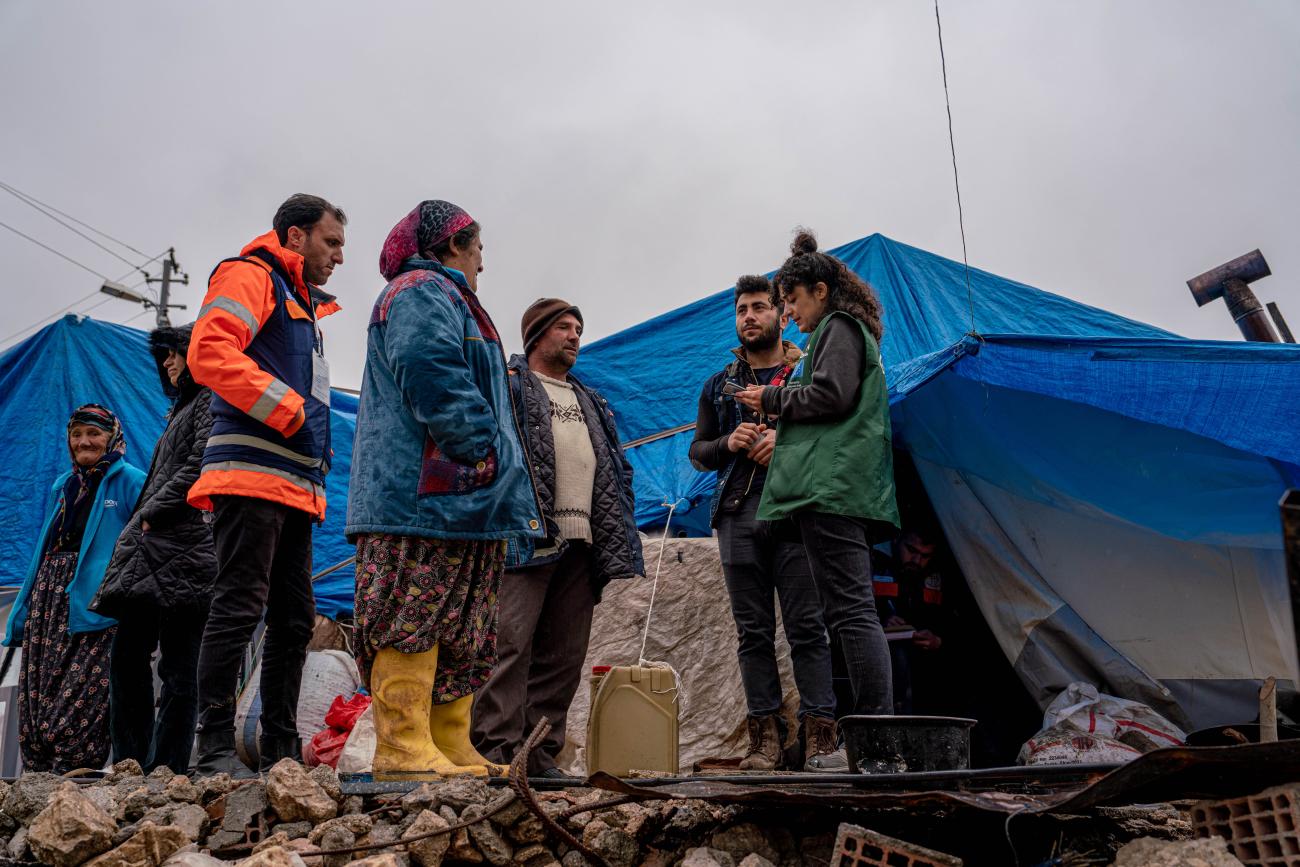
Earthquake survivors of rural communities tell their stories
Text by Gizem Yarbil Gurol. Photos: UNOCHA/Ahmad Abdulnafi
Original article at: https://unocha.exposure.co/turkiye-surviving-with-help-and-hope
The powerful earthquakes that struck southern Türkiye in February caused widespread destruction and devastation in urban and rural areas. The earthquakes — the strongest ever recorded in Türkiye since 1939 — significantly impacted 11 provinces and directly affected 9.1 million people.
At least 3 million people have relocated, as their homes and communities were torn apart. But for many, their new reality is one of uncertainty and hardship. Some people moved to cities across the country, others went to formal camps managed by the Government, but the majority took shelter in tents or makeshift shelters, often located close to damaged buildings or their own destroyed homes.
Many rural communities chose to settle close to their damaged homes because of their deep ties to the land. Leaving behind their agricultural land and livestock — their primary sources of income and livelihood — was not an option. However, these communities are now increasingly vulnerable, as they are often located in remote, hard-to-reach areas significantly impacted by the earthquakes.
The narrow and rocky road to İncekoz village in Adıyaman, one of Türkiye’s most-affected provinces, presents a daunting challenge. The earthquakes wreaked havoc on the already risky route to the province, causing large rocks to fall from nearby mountains onto both sides of the road. This made it increasingly precarious for cars to navigate the area, and it is now more challenging to deliver aid.
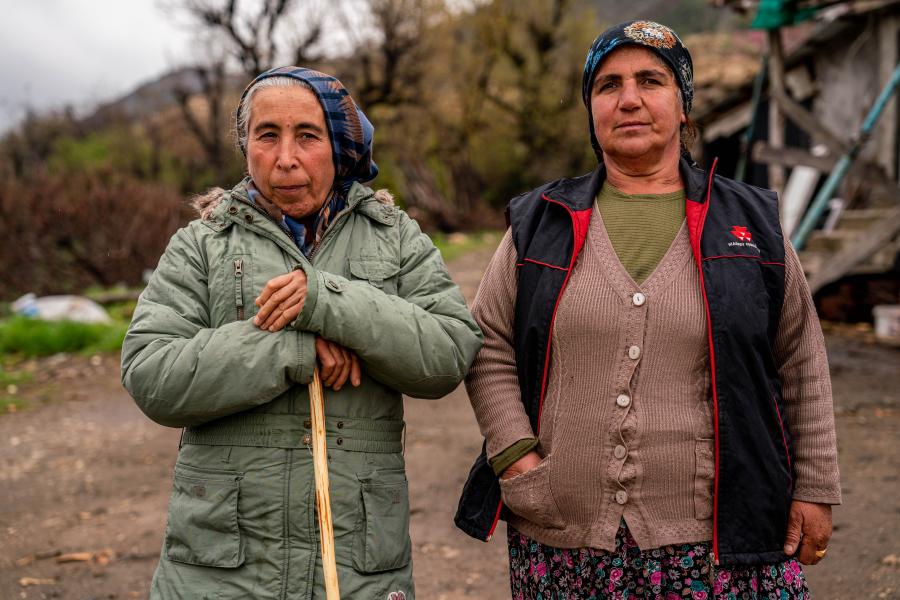
The earthquakes’ aftermath has not been easy for the people of İncekoz. Of the 56 houses in the village, 25 collapsed. The villagers say that assistance and services were significantly delayed following the earthquakes.
“We didn’t have electricity for almost a month,” says Zeynep Tutar, while her friend Fatma Karlı recalls how 16 people had to cram into a minibus for shelter for almost two weeks, as initially there were no tents.
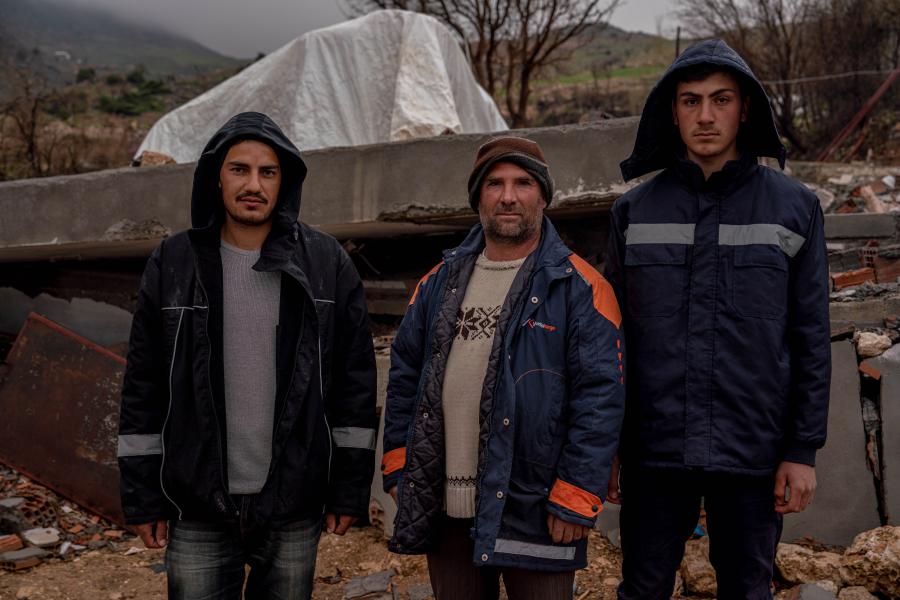
But for one family, the losses were immense. The Fil family finished building their home just two years ago, only to see it reduced to rubble. They survived, but their livestock, which was their livelihood, were not as fortunate; many were trapped in a barn and killed. The family also lost their tractor.
“We’ve lost everything,” laments Esma Fil. “We were only able to save our own lives, we couldn’t salvage much from the rubble.”
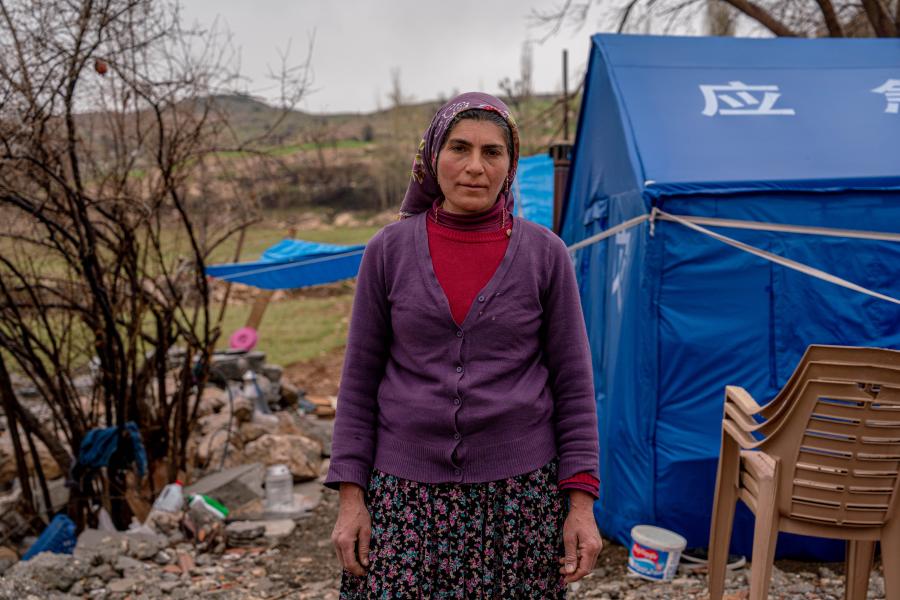
Aydın Fil explains: “Our biggest source of livelihood here is tobacco and livestock farming. We have received some aid for the animals that survived, but no aid was provided to compensate for the animals killed.”
Hüseyin, also a tobacco farmer, lost his goats to the earthquakes. He now also worries about losing his home, which was heavily damaged. Authorities told him his house must be demolished, but he wants to fix it rather than lose it. Despite the challenges, these farmers still have hope; they look forward to the tobacco farming season to resume their livelihood.
“Life goes on,” says Aydın Fil. “We are waiting for spring and summer. We will plant tobacco again. We will also plant onions, greenery and vegetables. We will plant whatever we can.”
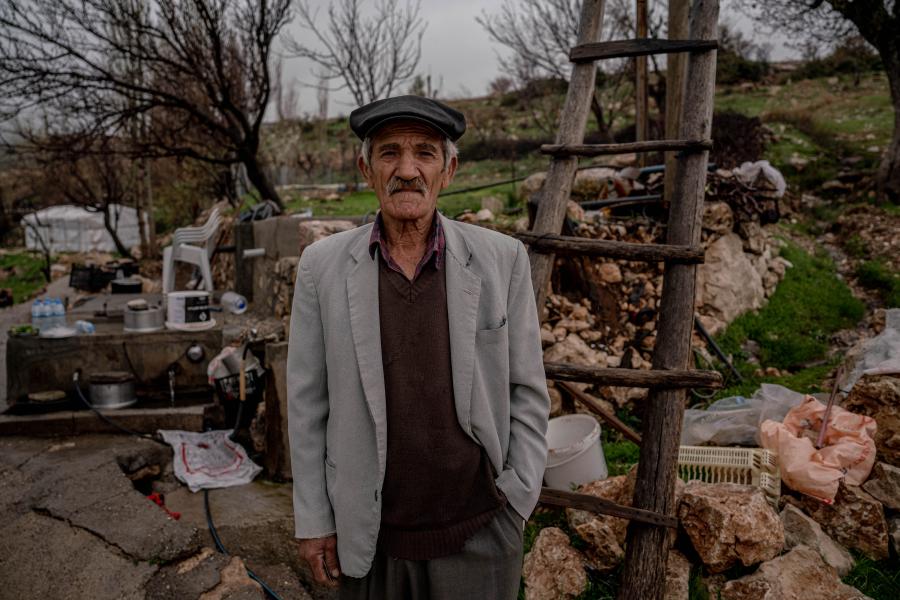
The earthquake-affected region is known as the Fertile Crescent and is critical for agricultural production, food industry and agricultural livelihoods. Initial assessments indicate that the earthquakes damaged more than 20 per cent of Türkiye’s agricultural production. This includes severe damage to crops, livestock and rural infrastructure, which has an immediate and longer-term impact on the availability of food.
The impact of physical damage and disruption to basic services is felt differently across locations, with those in rural areas experiencing more limited access to services. While the Government plans to support people with relief and recovery assistance, due to the scale of the disaster many people, particularly in rural areas, are still living in extremely difficult conditions.
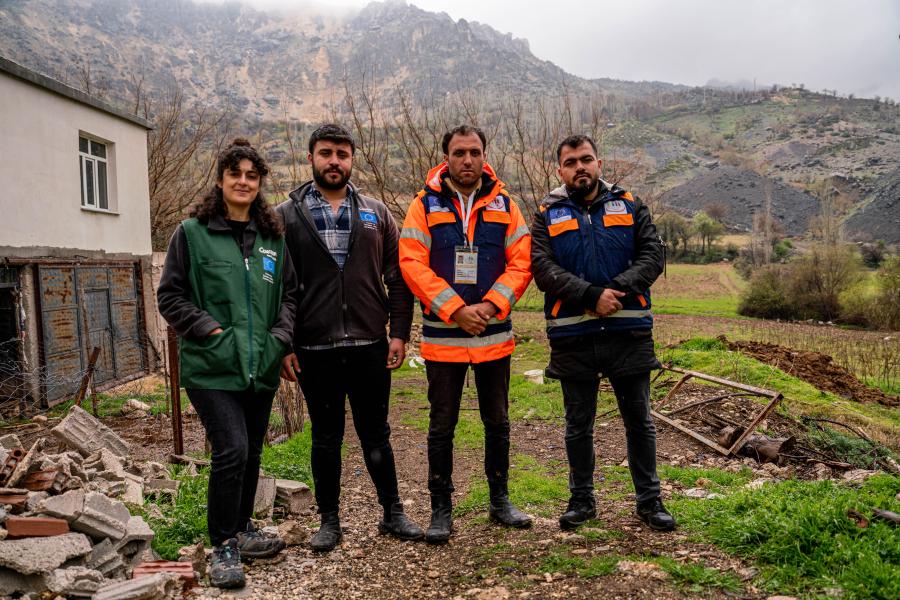
Concern Worldwide and its implementing partner Gökkuşağı go from door to door in Adıyaman’s remote villages to make sure communities have the essential aid they need.
Rojda Dinç, Programme Officer at Concern Worldwide, explains: “İncekoz is a region where the destruction is too heavy and it is very difficult to reach these areas, so very few aid organizations operate here.
Initially, we consulted with the mukhtar (village head) to identify the primary needs of rural people in this area. Based on his feedback, we discovered that while food packages and blankets had been distributed, hygiene items were lacking. So, our focus today is providing hygiene packages. However, we take the time to visit each tent and assess the specific needs of the people residing there, distributing aid accordingly."
As we make our way from the outskirts of Adıyaman towards the city centre, we come across a livelier scene in Narlıkuyu camp. Here, Turkish NGO Pikolo set up a child-friendly space that offers psychosocial support activities to children displaced by the earthquakes. Despite their trauma and emotional burden, the children play with enthusiasm.
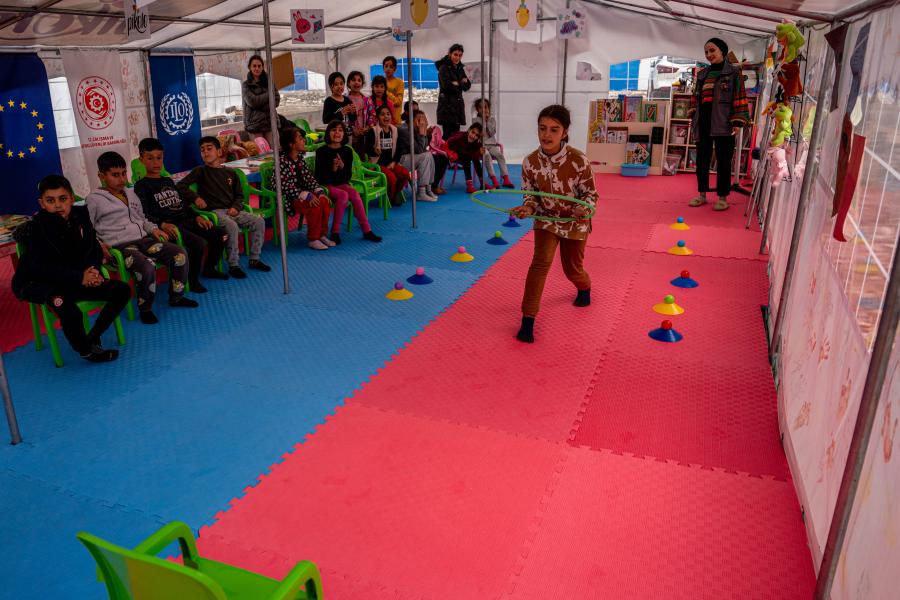
Havva Karahanlı, a Child Psychologist working at the camp, explains: “Yesterday we played a game of wishes, and what struck me the most was that many children wished to return home. It became clear to me just how much they yearned for their homes.”
She says the earthquakes left the children in emotional turmoil, and that they need a place of refuge, a space where they can feel safe and find comfort. But the tents are too small to accommodate entire families of four or five people, and in some cases more people have to stay in a single tent, especially in overcrowded, informal settlements.
Havva and other Pikolo team members work tirelessly to give the children the support they need, offering one-on-one psychosocial support sessions and playing games. Each day about 40 to 70 children between 6 and 16 come to the tent to participate in Pikolo’s activities.
Psychological support for people traumatized by the earthquakes is a critical need throughout the region. An assessment by Turkish NGO Nirengi Association revealed the extent of the challenges children are facing. Many cannot comprehend what has happened, process the loss of loved ones and friends, or effectively recognize and express their emotions. And because children live in cramped temporary shelters, they often witness their parents' fear and anxiety, which adds to their own stress and anxiety.
"Anxiety and anger seem to consume them," Havva says. "They worry if the earthquakes will happen again, and if they will ever be able to return to their homes."
However, she and her team are noticing improvements in the children's behaviour towards each other.
"There's still some way to go, but we've seen a positive shift in their interactions. They're slowly but surely learning to process their emotions and find comfort in each other's company," she adds.
Songül Olcay, a Child Development Specialist in this child-friendly space, is from Adıyaman and survived the earthquakes.
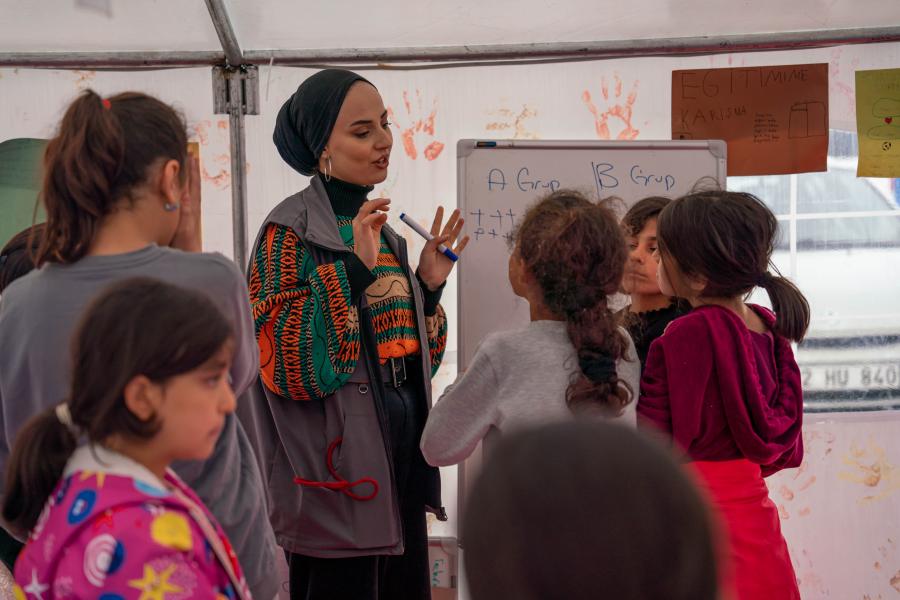
She explains: “We had a life before the earthquakes. We used to be able to buy anything we wanted, but now we have to wait in lines for basic necessities. It's a feeling of neediness and dependency. Three days after the earthquakes, I started to volunteer at a soup kitchen in our neighbourhood. I realized that sitting at home and thinking too much was not good for me. Volunteering helped me heal faster."
Fidan Akat, a Social Worker at Pikolo and an earthquake survivor, echoes Songül's sentiments about the healing power of volunteering.
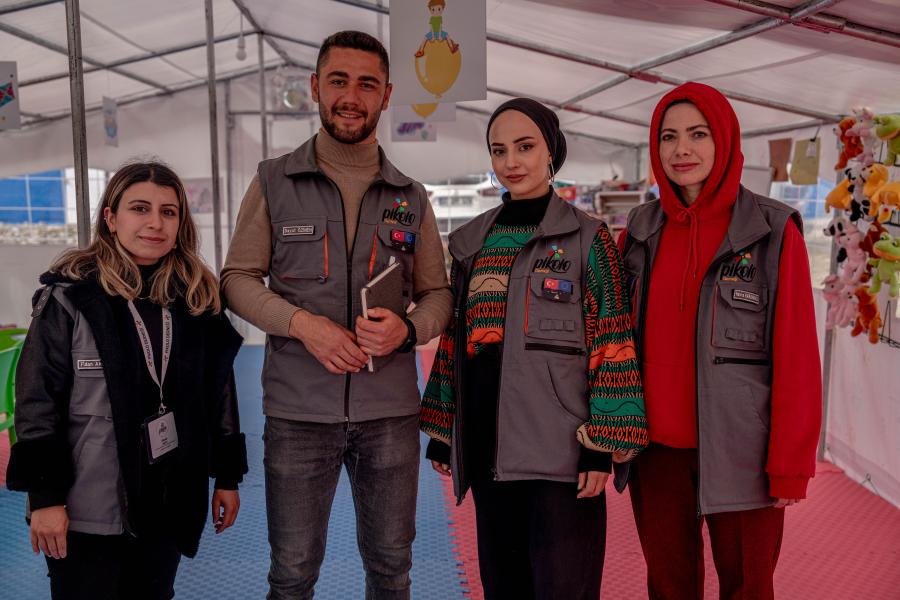
"We saw a lot of terrible things while doing humanitarian work, and some of my friends couldn't handle the pain and quit,” she said.
But Fidan persisted, delivering vital aid and helping to set up the child-friendly centre. She says they chose the location for the centre because the nearby buildings, although heavily damaged, have not yet been demolished.
“At least the buildings are still standing. Let the children see these,” she says.
© 2023 UN Humanitarian
















